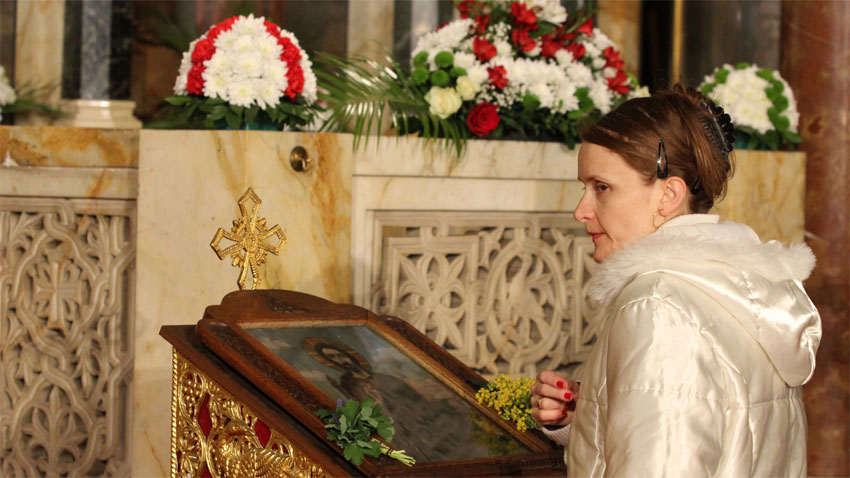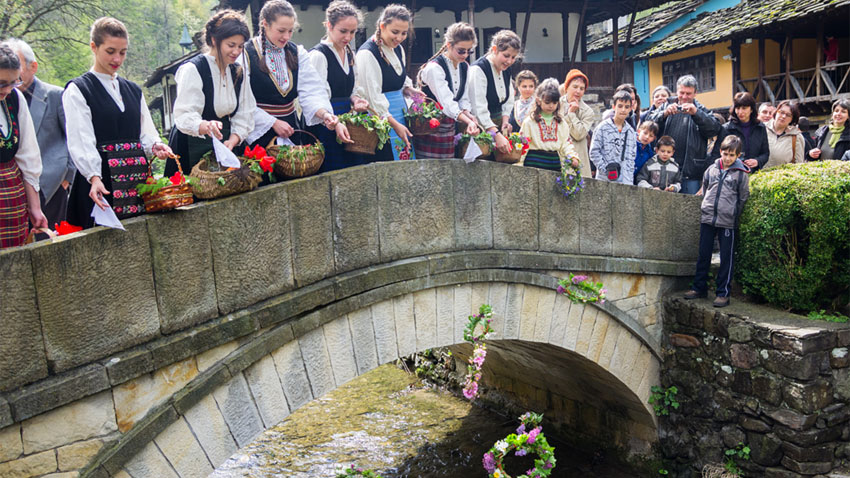Day after Lazarus Saturday and a week before Easter, Palm Sunday (“Tsvetnitsa”) comes - a spring holiday, devoted to reviving nature and its life-giving power. In the church calendar, this holiday is dedicated to the entrance of Christ in Jerusalem, where He was welcomed with laurel and olive branches, days before being crucified. The day is marked by Orthodox, Catholic and Protestant Chirstians.

In Bulgaria it is also called Vrubnitza, Flower Sunday, Kuklinden. Traditionally, in the morning, there is a festive church service, from which people leave carrying blessed willow branches, geranium and flowers that they place in front of an icon in home and atthe front door. In the past they used to keep the willow branch because of the belief in the powers of the twig to protect against diseases and disasters. In the spring and summer, when a storm came, people brought the wreath in the yard and looked through it to the clouds, with the hope that skies would clear. People also believed lighting part of the twig would prevent thunderstorms. Holding a willow stick taken from the church, people took cows to their first spring grazing in order for them to be healthy.
Special loaves of bread are bakedonVrabnica, which are part of bride rituals. Folk rituals end with the custom of “lazaruvane”. In the morning young brides as well as unmarried girls bring wreaths of willow twigs, flowers, and little loaves of bread, called “kukla”. The girls put the ritual objects in the river and watch whose wreath or bread will be the fastest and taken further by the flow of water. The winner enjoys special attention from the others.
The Lents are not over, but because of the significance of the day, fish is allowed to be consumed. The tradition does not allow people to dance “horo,” that has the chain of people closed and forming a circle. Only “Buenek” is danced – a lively open horo dance, accompanied by a song. People dance to the right and the chain is led by a young woman.

Today the holiday continues to be celebrated throughout the country. Willow twigs and flowers decorate homes and churches. Most festive is the mood in the homes of the great number of people bearing a name of a flower, a tree, or a plant.
English: Alexander Markov
Photos: archiveEveryone in Bulgaria has heard scary stories about dangerous vampires since childhood. Today, these dark spirits are familiar to us mainly from the way they are recreated by the authors of novels and especially popular titles in the cinema. However, we..
A festive concert of the Otets Paissii Performing Folk Ensemble will be held in Nessebar today, as the ensemble celebrates 70 years since its establishment. The formation is the oldest Bulgarian folklore ensemble in the USA at the..
Ritual food is an integral part of the Bulgarian ritual system. In the calendar of a Bulgarian village more than a century ago, food with meat was rarely consumed. People usually ate meat 4-5 times a year - on Christmas, St. George’s..

+359 2 9336 661
